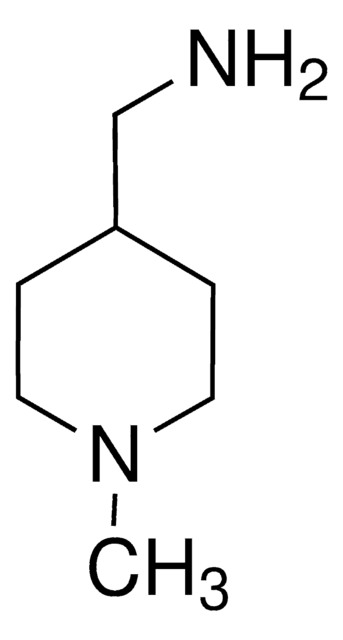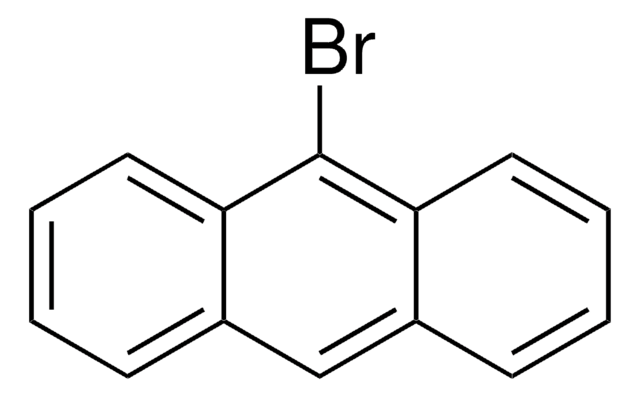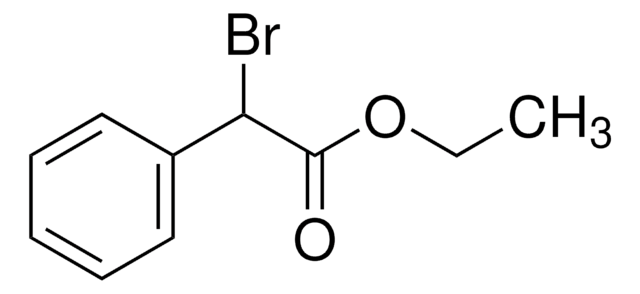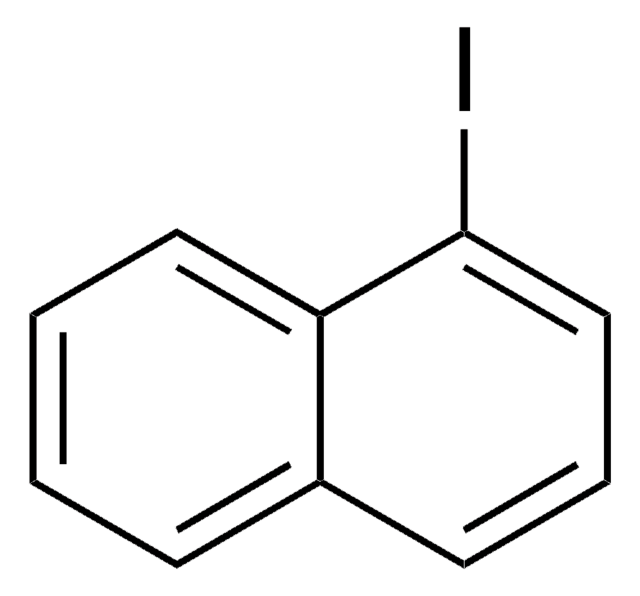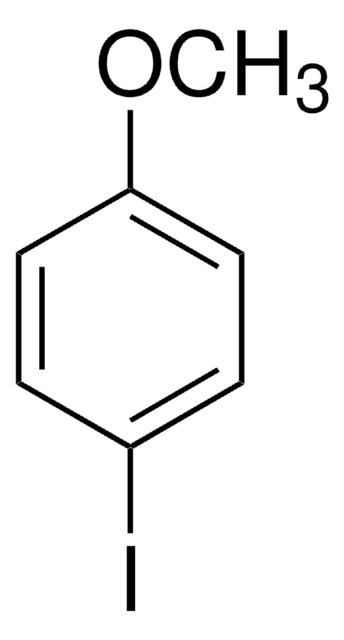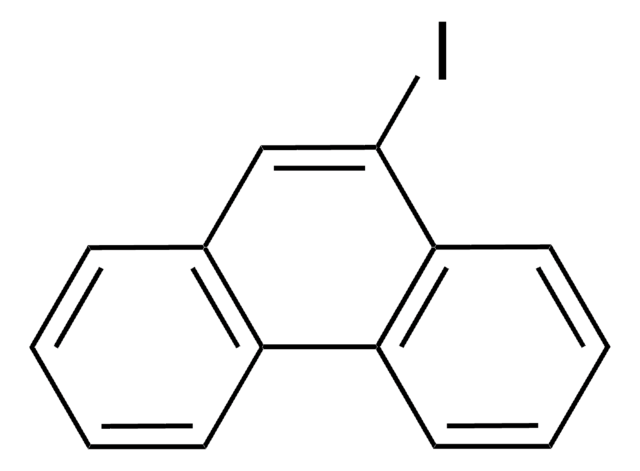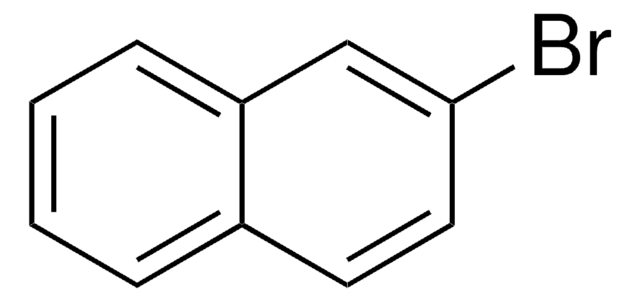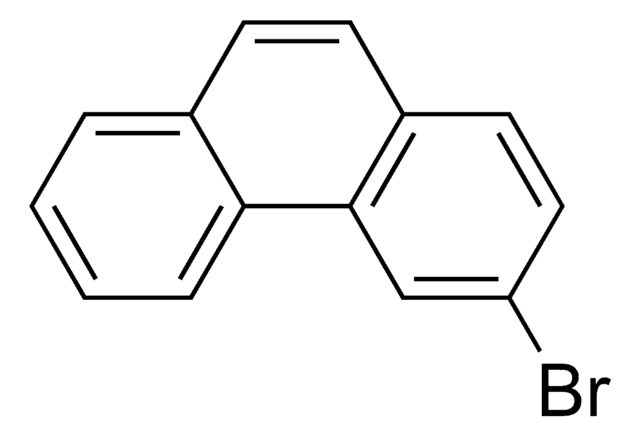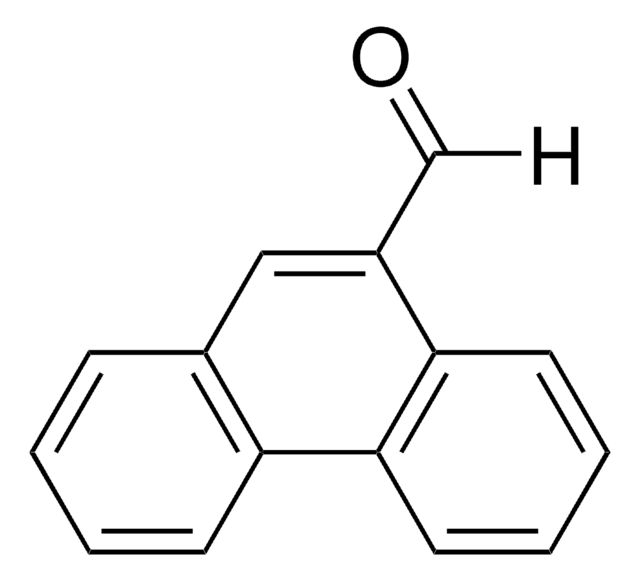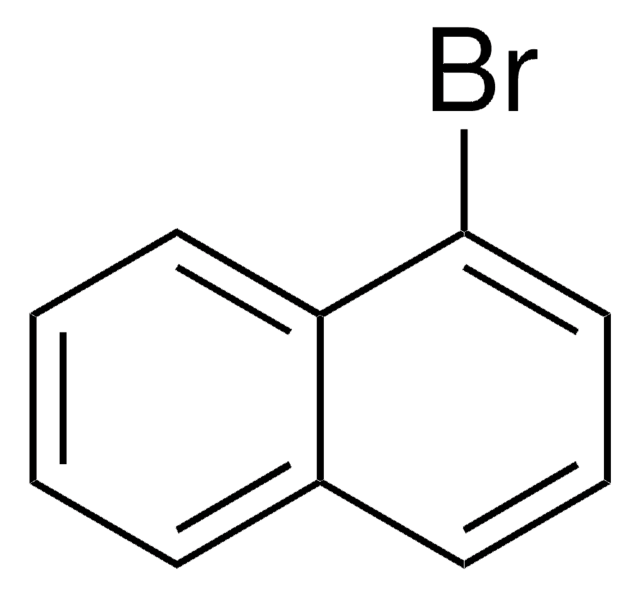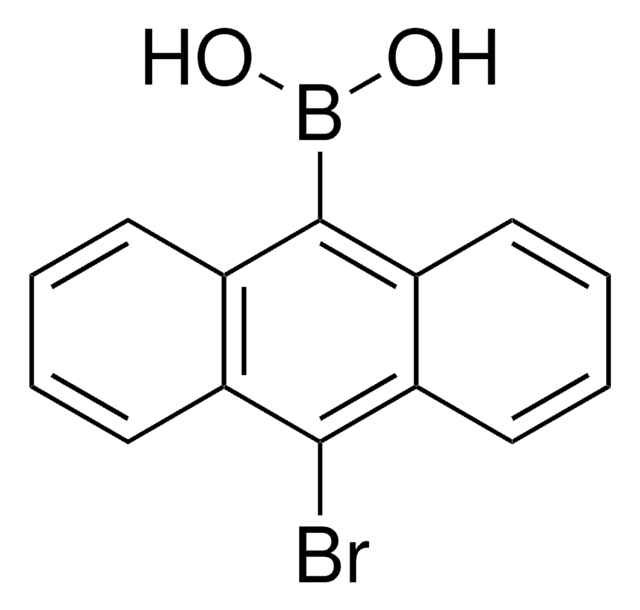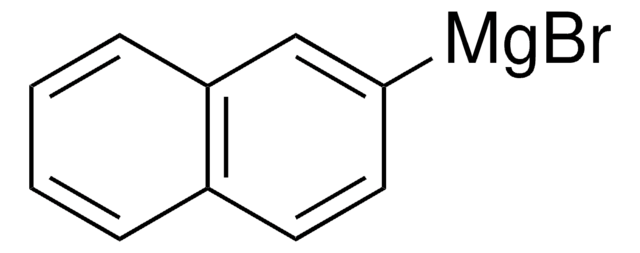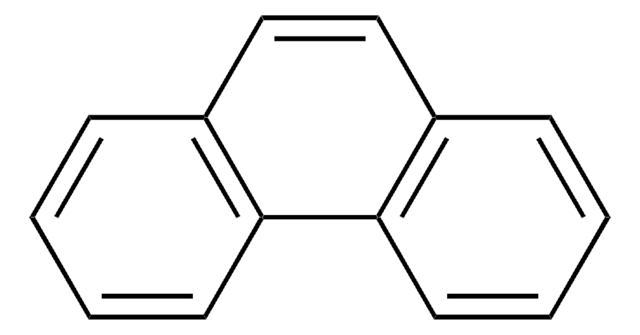B75409
9-Bromophenanthrene
96%
Sinonimo/i:
9-Phenanthryl bromide
Autenticatiper visualizzare i prezzi riservati alla tua organizzazione & contrattuali
About This Item
Formula empirica (notazione di Hill):
C14H9Br
Numero CAS:
Peso molecolare:
257.13
Beilstein:
1869927
Numero CE:
Numero MDL:
Codice UNSPSC:
12352100
ID PubChem:
NACRES:
NA.22
Prodotti consigliati
Livello qualitativo
Saggio
96%
Stato
powder
P. ebollizione
180-190 °C/2 mmHg (lit.)
Punto di fusione
60-64 °C (lit.)
Stringa SMILE
Brc1cc2ccccc2c3ccccc13
InChI
1S/C14H9Br/c15-14-9-10-5-1-2-6-11(10)12-7-3-4-8-13(12)14/h1-9H
RSQXKVWKJVUZDG-UHFFFAOYSA-N
Cerchi prodotti simili? Visita Guida al confronto tra prodotti
Categorie correlate
Descrizione generale
9-bromophenanthrene is a versatile halogenated organic compound that can be used as a reagent in various reactions such as Friedel-Crafts reaction and the Diels-Alder reaction. It is also used as a precursor for the synthesis of 9-bromoanthracene, 9-bromophenanthroline, and 9-bromophenanthridine.
Applicazioni
9-bromophenanthrene can be used as a building block in the synthesis of N-heterocyclic-carbene complexes via Suzuki−Miyaura cross-coupling reaction with aryl boronic acids.
Codice della classe di stoccaggio
11 - Combustible Solids
Classe di pericolosità dell'acqua (WGK)
WGK 3
Punto d’infiammabilità (°F)
Not applicable
Punto d’infiammabilità (°C)
Not applicable
Dispositivi di protezione individuale
Eyeshields, Gloves, type N95 (US)
Scegli una delle versioni più recenti:
Possiedi già questo prodotto?
I documenti relativi ai prodotti acquistati recentemente sono disponibili nell’Archivio dei documenti.
I clienti hanno visto anche
Long Zhao et al.
Chemphyschem : a European journal of chemical physics and physical chemistry, 20(6), 791-797 (2019-02-03)
For the last decades, the hydrogen-abstraction-acetylene-addition (HACA) mechanism has been widely invoked to rationalize the high-temperature synthesis of PAHs as detected in carbonaceous meteorites (CM) and proposed to exist in the interstellar medium (ISM). By unravelling the chemistry of the
Diógenes Herreno-Sáenz et al.
International journal of environmental research and public health, 3(2), 191-195 (2006-07-11)
Since the finding in the 1930s, a large number of polycyclic aromatic hydrocarbons (PAHs) of different structures have been tested for potential tumorigenicity. Structure-activity relationships of halo-PAHs have been investigated to determine the regions of a PAH that may be
Rong Jin et al.
Journal of chromatography. A, 1509, 114-122 (2017-06-18)
Isotopic dilution gas chromatography combined with high resolution mass spectrometry (GC/HRMS) has overwhelming advantages with respect to the accuracy of congener-specific ultratrace analysis of complex persistent organic pollutants (POPs) in environmental matrices. However, an isotopic dilution GC/HRMS method for analysis
Jian-Lin Sun et al.
Ecotoxicology and environmental safety, 113, 31-37 (2014-12-09)
Halogenated polycyclic aromatic hydrocarbons (HPAHs) have been reported to occur widely in urban air. Nevertheless, knowledge about the human health risk associated with inhalation exposure to HPAHs is scarce so far. In the present study, nine HPAHs and 16 PAHs
Il team dei nostri ricercatori vanta grande esperienza in tutte le aree della ricerca quali Life Science, scienza dei materiali, sintesi chimica, cromatografia, discipline analitiche, ecc..
Contatta l'Assistenza Tecnica.